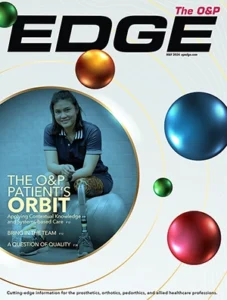Systems can have a direct effect on how healthy and flexible your organization is with respect to inherent chaos that innovation presents. Learning groups with lower levels of collective anxiety can exchange information without the charged emotionality that hinders effective communication in lower performing groups. Healthy groups show a greater capacity to take on the uncertainty and risk associated with emerging innovations by encouraging thoughtful member interaction.
However, a reactive knot of poor relationships binds the group together emotionally and diminishes the role of individual opinion. Over time, the group may develop an increased resistance to innovation, which introduces a greater potential for disharmony and failure. If resistance stiffens to the point that invisible architecture or culture of the organization cannot respond to the demands of the environment, the group loses the ability to innovate or make decisions that initiate transformation.
In healthcare, the risks and advantages of emerging technology are dramatic since innovations concern themselves with the welfare of others. Although the adoption of technology may seem to be an inherently positive practice, it may cause many unintended negative consequences. The biggest challenge for any group is to consider the various factors during the innovation-decision process and sift the positive innovations from the potentially negative ones.
Successful groups and individuals are typically more selective, thoughtful, and accurate in their assessments of technology than unsuccessful groups Healthcare professionals must make a number of innovation-adoption decisions regarding novel technology and care processes. Clinicians and staff often rely on the professional environment of their groups during the innovation-adoption decision to consider thoughtfully emerging healthcare technology. A supportive, thoughtful, and professional communication structure can provide a firmer foundation to process the uncertainty and risk of emerging healthcare technology. A group who engages in emotionally reactive communications may not be able to provide this foundational support.
“I believe innovation is highly social process,” says Evan Impeduglia, director of market development for Ottobock Patient Care. “I see people glued to their phone, and I am hoping they are utilizing that technology to elicit conversations within their profession.
“We may be missing an opportunity to ask the right questions. So many people are complacent in their work because they are afraid of critique or review, but we need that challenge to get better. Often, I see clinics that are siloed with the delusion they are performing well, but they are not. We need that extrinsic viewpoint to make better choices for the future so we can survive and thrive in the market.”
Gerald Stark, PhD, MSEM, CPO/L, FAAOP(D), is the director of clinical affairs for Ottobock Patient Care, Texas.





